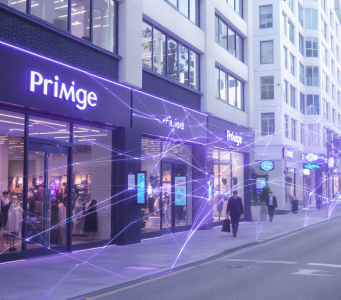From Data Chaos to Clarity: Why Retail Leaders Need Explainable AI in Pricing
From Data Chaos to Clarity: Why Retail Leaders Need Explainable AI in Pricing
In retail, data is everywhere. Pricing teams track competitor moves, analyze historical sales, forecast demand, and model promotions across thousands of SKUs. Executives sit on top of dashboards filled with numbers, but often the signals are buried under noise. Data overload is real, and the pressure to make quick, profitable decisions only compounds the challenge.
Artificial intelligence has emerged as the solution to this complexity. By processing massive datasets and surfacing recommendations, AI helps retailers cut through the chaos. Yet for many executives, one concern remains: trust. If a system recommends raising the price of a best-selling SKU or holding firm during a competitor promotion, decision-makers want to know why. Blind faith in a black-box model is not an option when margins and brand reputation are at stake.
This is where explainable AI enters the conversation. Far from being a technical feature, explainability is what turns AI from an abstract algorithm into a trusted advisor. Retail leaders do not just want answers. They want clarity, context, and confidence.
To see why explainability matters so much, it is important to look at the gap between having data and truly understanding it.

The Burden of Data Without Clarity
Retailers already have access to more data than they can act upon. Transaction histories, competitor price feeds, promotional calendars, loyalty behavior, and supply chain costs are all sitting in different systems. While the data is available, connecting it in a way that drives actionable decisions is another story.
This complexity often results in analysis paralysis. Managers spend hours combing through spreadsheets, attempting to reconcile conflicting signals. Should they match a competitor’s discount? Should they raise prices in a category where elasticity is unclear? Should they bundle certain products to move excess inventory?
In fast-moving markets, delayed action is costly. Competitors that adjust daily pricing quickly seize share, while over-discounting erodes profitability. What leaders need is not more data points but more clarity, insights that cut through noise and point toward confident, profit-driven actions.
This struggle with data overload highlights why explainability is more than a technical feature, it is the bridge between analysis and action.
Why Explainability Matters
AI is powerful, but without transparency it risks creating mistrust. A recommendation to change prices by five percent may be mathematically correct, but if executives cannot see the reasoning, adoption will falter.
Retail leaders need explainability for three reasons:
-
Confidence in high-stakes decisions
Every pricing action impacts revenue, customer trust, and long-term brand equity. Leaders want to see the logic behind recommendations so they can evaluate trade-offs.
-
Alignment across teams
Pricing decisions involve multiple stakeholders, from finance to merchandising to marketing. When an AI system explains its reasoning, teams can rally around a shared understanding instead of debating numbers in isolation.
-
Governance and accountability
In regulated or highly competitive markets, businesses must justify pricing strategies to boards, regulators, or investors. Explainable AI provides a clear narrative of why decisions were made, backed by data.
Without explainability, AI risks being sidelined as an interesting tool rather than a transformative capability.
The good news is that explainable AI is not just a concept. Platforms like Hypersonix are already making this clarity a reality for retailers.

How Hypersonix Brings Clarity to AI-Driven Pricing
Hypersonix is built with explainability at its core. The platform is not designed to overwhelm users with opaque models. Instead, it makes the reasoning behind every recommendation transparent and actionable. Here’s how:
-
Context-rich recommendations
When Pricing AI suggests a price change, it provides the supporting evidence: competitor pricing shifts, elasticity trends, and the expected impact on margin. Leaders can see not only what to do, but also why it matters. -
Competitor intelligence with attribution
Competitor AI tracks pricing across multiple channels daily. Recommendations are linked to specific competitive moves, so managers know exactly which rival or SKU influenced the system’s insight. -
Elasticity and clustering made clear
Rather than burying leaders in equations, Hypersonix explains elasticity in plain terms. For example: “Demand for this product remains stable even at higher price points, while substitute products are more price sensitive.” This bridges the gap between advanced modeling and executive decision-making. -
Visual storytelling
Data is presented through clear visualizations that highlight trends, trade-offs, and projected outcomes. Leaders can see how a decision will play out in both best- and worst-case scenarios, enabling informed judgment. -
Agentic workflows with oversight
Hypersonix’s agentic workflows guide decision-making but never remove human control. Executives retain the authority to accept, adjust, or reject recommendations, ensuring AI augments leadership rather than overriding it.
The value of transparency does not stop at the executive level. It cascades across every function in retail operations.
Building Trust Across the Organization
Explainability is not just for executives. It builds adoption across all levels of the organization.
- For pricing teams, it reduces second-guessing. Analysts can see the inputs behind recommendations and focus on refining strategy instead of defending numbers.
- For category managers, it brings alignment between promotions and competitive positioning. They can understand the logic behind campaign recommendations and coordinate with merchandising teams.
- For finance leaders, it provides assurance that profitability goals are central to every decision, backed by transparent data.
The result is a culture where AI is not seen as a black box but as a collaborative tool that empowers every decision-maker.
When explainability is embedded throughout the business, the shift from confusion to clarity becomes visible in day-to-day decision-making.

From Chaos to Confidence
Consider the contrast between two scenarios:
In the first, a retailer receives a spreadsheet showing that competitors have cut prices on 50 SKUs. The data is raw, and managers must guess how to respond. This often leads to rushed decisions, blanket discounts, or hesitation that costs sales.
In the second, the same retailer uses Hypersonix. The platform surfaces not only the competitor’s moves but also highlights which SKUs are substitutes, models demand elasticity, and shows the expected margin impact of different responses. It then recommends holding firm on some products while adjusting pricing on others, with clear reasoning provided.
In the second scenario, leaders are not overwhelmed by noise. They are equipped with clarity and confidence. Decisions move faster, and every action is strategically aligned.
These examples underline a larger truth: explainability is not a nice-to-have. It is what will define the future of pricing.
Why Explainable AI Is the Future of Pricing
Retailers who embrace explainable AI will build stronger competitive advantage. Markets are moving too fast for manual analysis, yet too sensitive for blind automation. The middle ground is explainable intelligence — AI that operates at speed while making its reasoning clear.
This clarity enables retailers to:
- Move faster without sacrificing oversight
- Build alignment across teams and stakeholders
- Protect margins by making smarter trade-offs
- Strengthen customer trust through transparent strategies
Ultimately, explainable AI ensures that pricing becomes a lever for growth rather than a risk factor.
All of these points come together to make one thing clear: explainable AI is essential for building trust and making pricing a true growth lever.
Conclusion
Retail leaders are no longer asking whether to use AI. They are asking whether they can trust it. In an era defined by data chaos, explainability is the foundation of trust.
Hypersonix delivers this clarity by combining Competitor AI, Pricing AI, and agentic workflows into a platform where every recommendation is transparent, contextual, and aligned with profitability goals. Executives no longer face black-box outputs or hidden models. They see exactly why a decision is recommended and how it will impact the business.
The future of retail pricing will not be built on guesswork or opaque systems. It will be built on AI that explains itself, builds trust, and empowers leaders to act with both speed and confidence.






